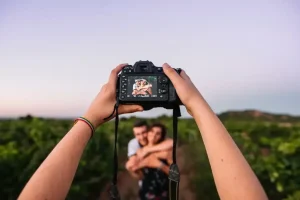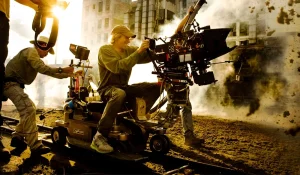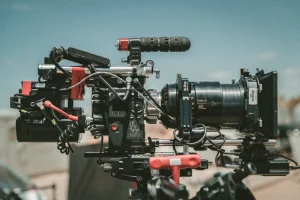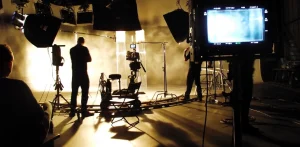Movement camera refers to techniques like dolly, pan, tilt, and tracking—four fundamental moves that can breathe life into a story on screen. If you’re just stepping into the world of filmmaking, you might wonder, “Why move the camera at all?” The answer is simple: film is not merely a collection of still frames, but a continuous flow of moving images that guide the audience’s eyes and emotions. These movements aren’t just about making things look stylish—they’re powerful storytelling tools that shape how viewers feel, what they notice, and how they connect with the scene.
Why Does the Camera Have to Move?
Imagine if all the scenes in a movie were shot from one angle and remained still. It would definitely feel flat. Well, a moving camera can:
- Strengthen the emotions of the characters.
- Direct the audience’s gaze.
- Show a broader world within the story.
- Create tension or surprise.
Each movement camera has a different psychological effect. So every time you move the camera, you’re actually “communicating” with the audience’s emotions without them realizing it.
Dolly: Moving Forward or Backward
The dolly shot movement camera technique involves the camera actually moving forward or backward with the help of a device called a dolly—a wheeled trolley that glides smoothly along tracks or the floor. Unlike zoom—which only changes the lens’s focal length—a dolly actually moves the camera itself.
When to use it?
- Dolly in (forward): Perfect for dramatic moments, like when a character has an epiphany or experiences a major shock.
- Dolly out (backward): Makes the character appear small, alone, or isolated.
Iconic example:
Remember the scene in Jaws (1975) when Chief Brody realizes there’s a shark on the beach? That’s a dolly zoom—a combination of a forward dolly + backward zoom—which creates an odd perspective and makes the moment super tense.
Pan: Move Left or Right
Movement camera technique Pan is short for panorama. The movement is simply a horizontal shift of the camera from one point, usually on a tripod. So the camera doesn’t, move it just rotates.
When to use it?
- To introduce the location at the beginning of a scene.
- To follow character actions.
- To create tension or surprise (depending on the speed of the pan).
Important note:
If you want a fast transition effect, try a whip pan—a super-fast pan that creates a momentary blur. But be careful; if there’s no clear purpose, a pan that’s too fast can cause dizziness.
Tilt: Up or Down
The Tilt shot camera movement technique is similar to a pan, but the movement is vertical—moving the camera up or down from a fixed position.
When to use it?
- Tilt up: To show something tall, majestic, or awe-inspiring.
- Tilt down: To highlight something small, hidden, or to create a more melancholic atmosphere.
Psychological effects
Tilt can play with the perception of strength and weakness. For example, a tilt up on a villain makes them appear authoritative and intimidating. Conversely, a tilt down on a character experiencing a mental breakdown makes the audience feel sympathy.
Tracking Shot: Follow the Character
The tracking movement camera technique means the camera moves parallel to the subject, which is also moving. You can use a dolly, stabilizer, or even a handheld camera as long as it’s stable. The path can be straight, curved, or from behind (follow shot).
When to use it?
If you want the audience to feel like they are “walking” with the character, this is the best choice. Tracking shots make the audience feel like they are inside the story, not just watching from the outside.
Famous example
The movie Children of Men (2006) has a legendary tracking shot in the middle of a war scene without any cuts. It feels intense, real, and makes you unable to blink.
Tips for Beginner Filmmakers
- Understand the purpose—don’t move randomly. Ask yourself: does this movement add to the story?
- Use what you have. No expensive dolly? Try a wheelchair or skateboard!
- Practice coordination. Many movements require collaboration between the cameraman, actors, and set.
- Don’t be afraid to experiment. Sometimes a slightly shaky handheld shot feels more alive.
Read also: 13 Types of Framing in Movies.
Play with the combinations
Camera movement techniques don’t have to be used one at a time. For example, dolly + pan can create dramatic circular movements. Or tracking + tilt to follow a character climbing stairs with a unique feel. The more you practice, the more creative ideas you will get.
Camera movement is a visual language. With a dolly, you can make a moment feel intimate or distant. With a pan, you shift the audience’s gaze. With a tilt, you play with feelings of awe or pity. With tracking, you take the audience on a journey.
A captivating movie is not just about a good story, but also how you tell the story. And now, you have the basics to create camera movements that are not only cool, but also meaningful. Do you like this technique?




